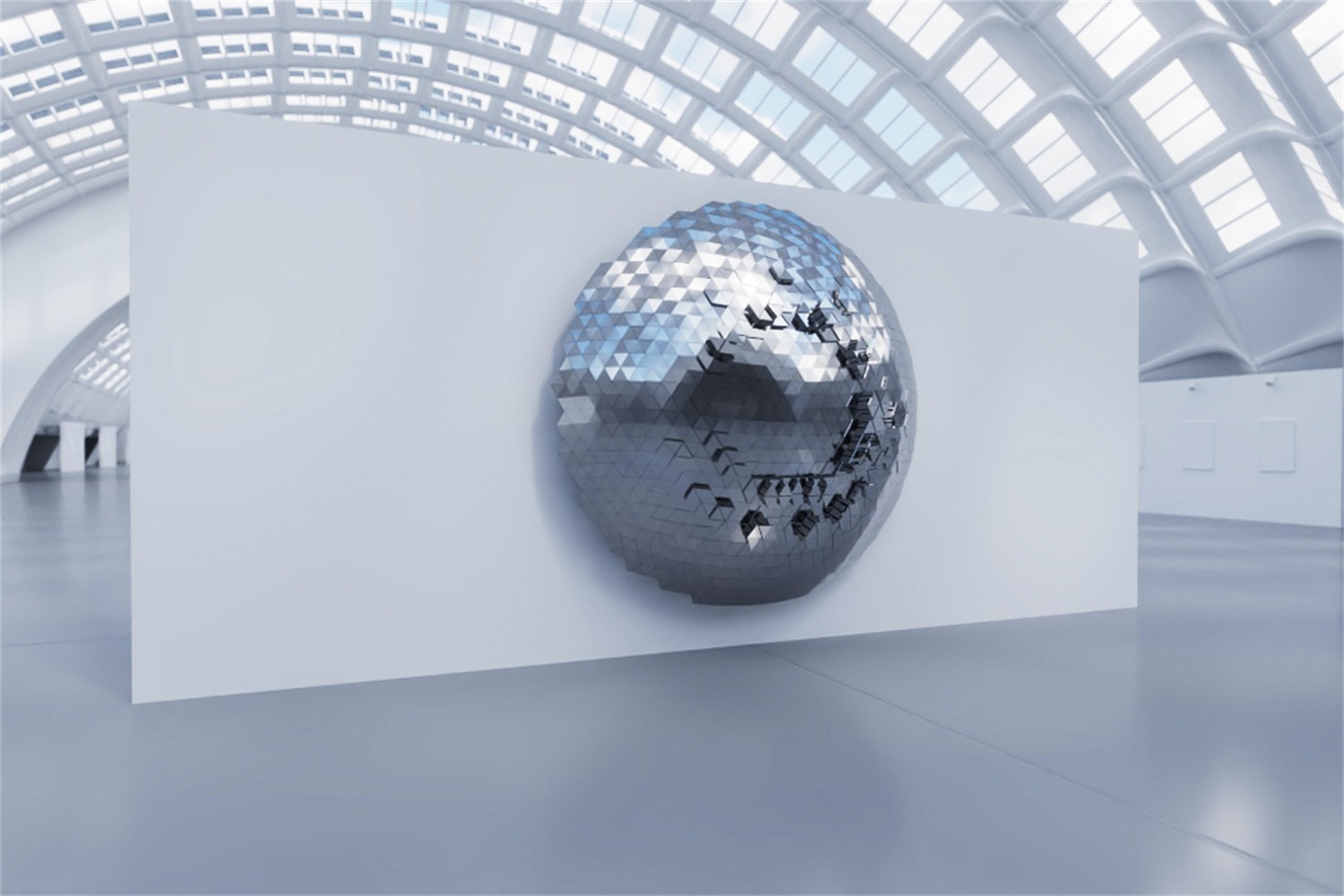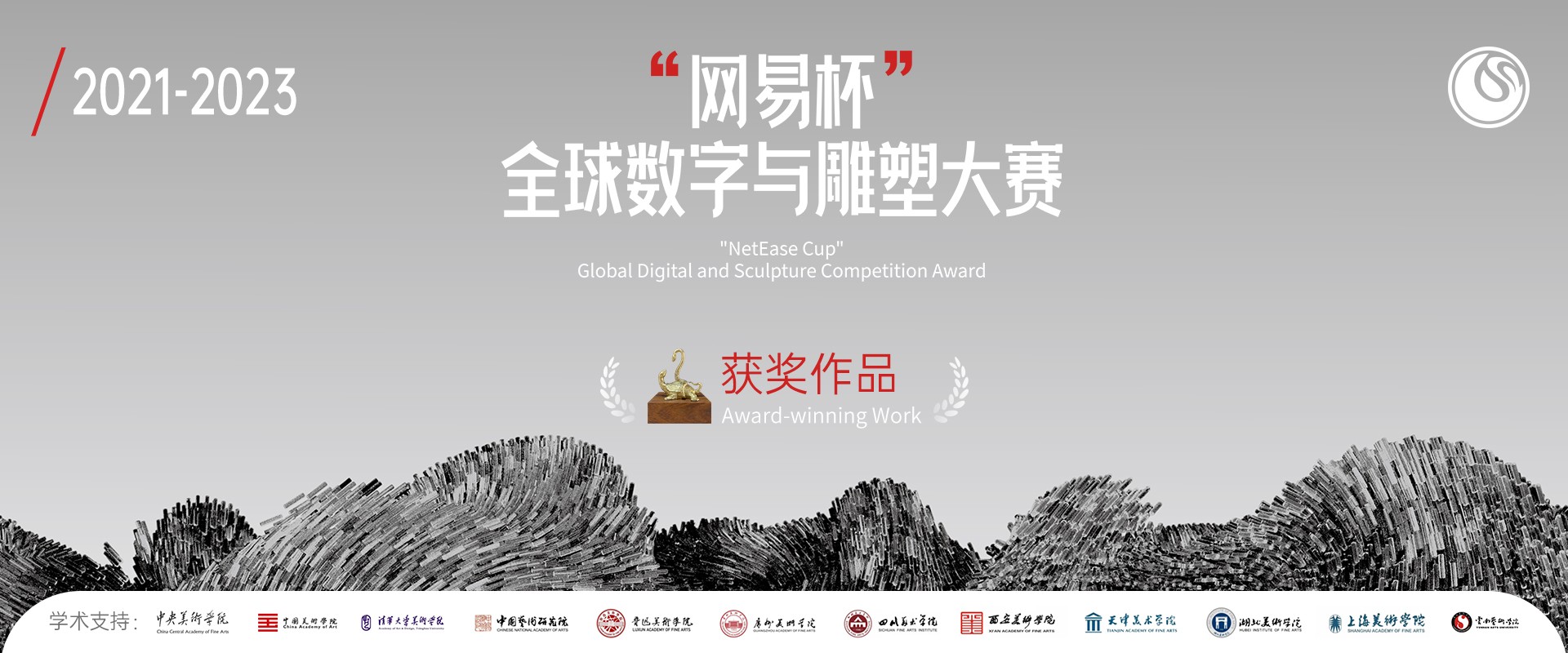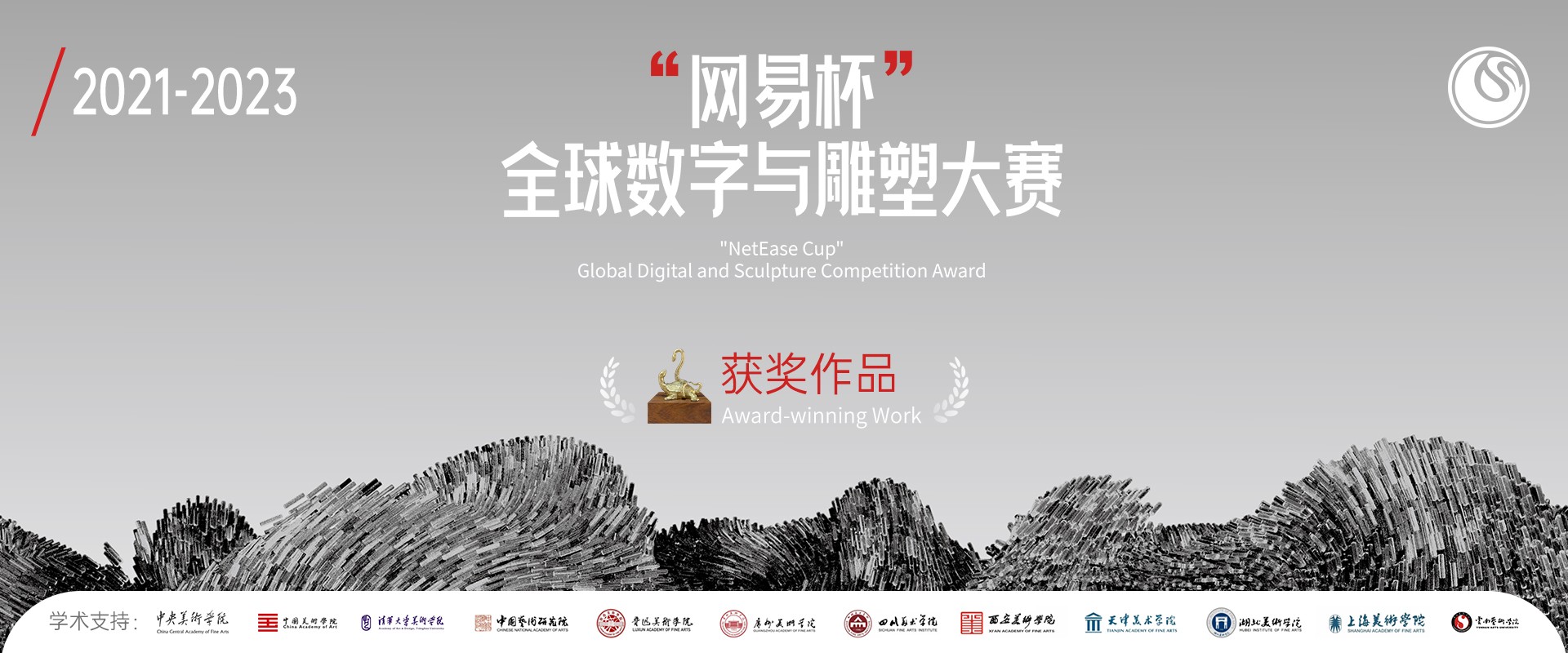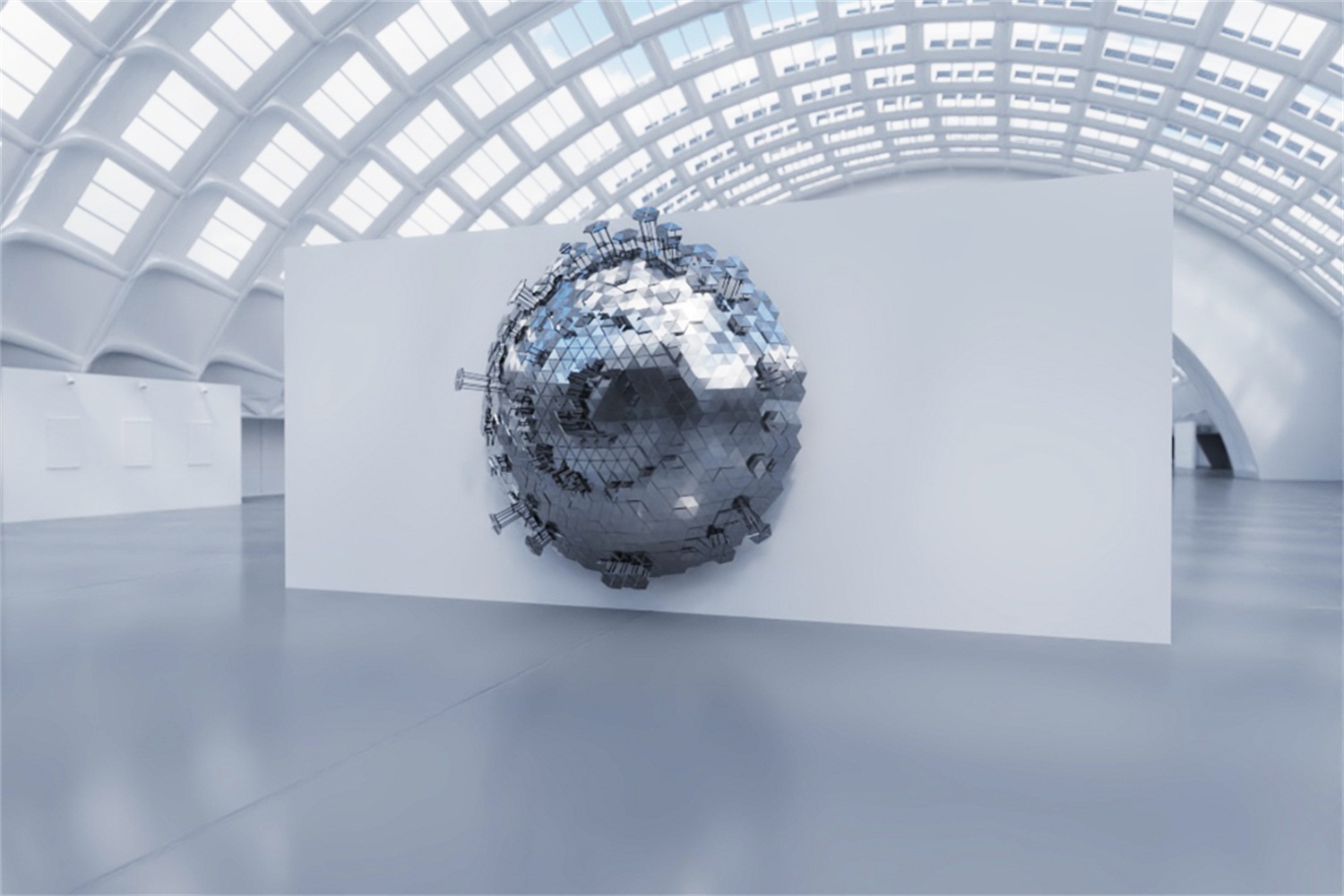
Using 1550 triangles arranged in a hemisphere, each triangle is numbered from the center radiating outwards. An audio signal is then inputted, and the high and low-frequency data of the audio is sampled 1550 times. These values drive the corresponding triangles to perform stretching and contraction movements, creating a vibrant visual representation of the sound. It is as if an eye is speaking, conveying a message.
"Eye Language" aims to merge different art forms such as sculpture, music, and animation through digital technology. It disrupts traditional forms of expression and presents a multidimensional sensory experience, exploring new possibilities in digital art.
Chen Ke (Dean of the School of Sculpture and Public Art at Guangzhou Academy of Fine Arts):
The work "Tongyu" showcases the integration and dialogue between art and technology through its geometric form and interactive nature. The work is a hemisphere composed of numerous triangular components, presenting a harmonious and balanced sense of symmetry and structured form, in contrast to traditional natural beauty, expressing an abstract beauty in modern aesthetics. Secondly, "pupils" not only collect light, but also capture sound, perceive movements, and even emotional fluctuations of the audience. In such interactive processes, the intervention of technology makes the artistic experience more three-dimensional and dynamic, allowing the audience to experience and interpret the world from different perspectives and levels. The work "Tongyu" is no longer a one-way observation window, but a two-way communication channel for information, a place for experience and perception. In this "pupil" composed of digital technology, the world becomes more fluid and malleable. The work "Tongyu" reflects how humans intervene and change their perception of the world through technology, as if the eyes of humans in the technological era, reconstruct the way we understand the world through this "pupil".






 Official account
Official account
 Microblog number
Microblog number
 Registration QQ
Registration QQ